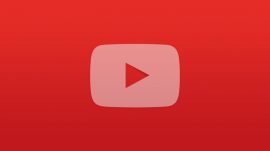YouTube ads found on extremist content channels, reigniting company’s brand safety issues


After spending more than a year convincing brands it was addressing its brand safety problems, YouTube is under fire again for showing ads alongside extremist content.
An investigation by CNN discovered ads from multiple brands and government agencies showing up on YouTube channels dedicated to white nationalist, pro-Nazi and North Korean propaganda content.
A number of well-known brands were named in CNN’s report, including Adidas, Amazon, Cisco, Facebook, Hershey, Hilton, LinkedIn, Mozilla, Netflix, Nissan and Under Armour. Both Nissan and Under Amour said they were pausing their YouTube ads, and Hilton told CNN it was in the process of removing its ads from the site.
A Nissan spokesperson told CNN: “Effectively immediately, we are freezing all of our advertising on YouTube until we resolve this issue.”
Not only were ads from well-known brands placed against extremist content, but a number of US government agencies — the Centers for Disease Control, the Department of Transportation, Customs and Border Protection, the Department of Veterans Affairs and the Coast Guard Academy — had ads that ran on North Korean propaganda channels. CNN reports that Washington Post and New York Times ads were found on far-right conspiracy YouTube channels connected to InfoWars.
According to CNN, YouTube has deleted one of the channels with extremist content that had ads running on it and removed the ability for a second channel to monetize its videos.
A YouTube spokesperson sent the following comment to Marketing Land in reference to CNN’s investigation:
We have partnered with our advertisers to make significant changes to how we approach monetisation on YouTube with stricter policies, better controls and greater transparency. When we find that ads mistakenly ran against content that doesn’t comply with our policies, we immediately remove those ads. We know that even when videos meet our advertiser friendly guidelines, not all videos will be appropriate for all brands. But we are committed to working with our advertisers and getting this right.
A year’s worth of YouTube brand safety issues
YouTube advertisers determine where they want their ads to be placed based on user demographics and behavior, and they can blacklist or filter channels to avoid showing their ads on channels with content that may conflict with their brand’s values.
In March of 2017, a number of brands began pulling their YouTube campaigns when their ads began showing up alongside extremist content. Within days, YouTube launched a massive effort to address its brand safety issues, announcing brand safety tools, new controls for advertisers and stricter guidelines around hate speech on the site.
YouTube continued its efforts to improve brand safety, announcing in October of last year that it had reviewed more than a million videos to identify extremist content. The company explained how it was using machine learning technology to help remove such content from the site. In January, YouTube rolled out stricter guidelines around which channels could be monetized. According to the new rules, a channel has to have a minimum of 1,000 subscribers and at least 4,000 hours of watch time during the last 12 months before it can carry ads.
Advertisers demand action
This latest report from CNN will no doubt reignite concerns from advertisers, who have to put a certain amount of trust in programmatic ad platforms that their ads are not showing up alongside offensive, extremist content. At IAB’s annual leadership conference in February, Unilever CMO Keith Weed threatened to take action against ad platforms that couldn’t guarantee brand safety.
“Unilever, as a trusted advertiser, does not want to advertise on platforms which do not make a positive contribution to society,” said Weed at IAB’s annual leadership event. “We cannot continue to prop up a digital supply chain — one that delivers over a quarter of our advertising to our consumers — which at times is little better than a swamp in terms of its transparency.”
Wood’s comments came more than a year after Procter & Gamble’s Chief Brand Officer made similar statements. P&G’s Marc Pritchard demanded industry-standard viewability metrics, fraud protection and third-party verification in January of 2017, after the company had pulled more than $140 million in digital advertising spend.
How strong is advertiser confidence in YouTube?
Just two days ago, YouTube CEO Susan Wojcicki published a letter to creators on the YouTube Creator Blog, claiming the stricter guidelines it released this year, “… strengthened advertiser confidence, making monetization and the broader community on YouTube stronger for creators building their business on the platform.”
With these latest findings from CNN, it appears YouTube still has a way to go before it will meet the standards being demanded by global corporations like Unilever and P&G.
The post YouTube ads found on extremist content channels, reigniting company’s brand safety issues appeared first on Marketing Land.
From our sponsors: YouTube ads found on extremist content channels, reigniting company’s brand safety issues



